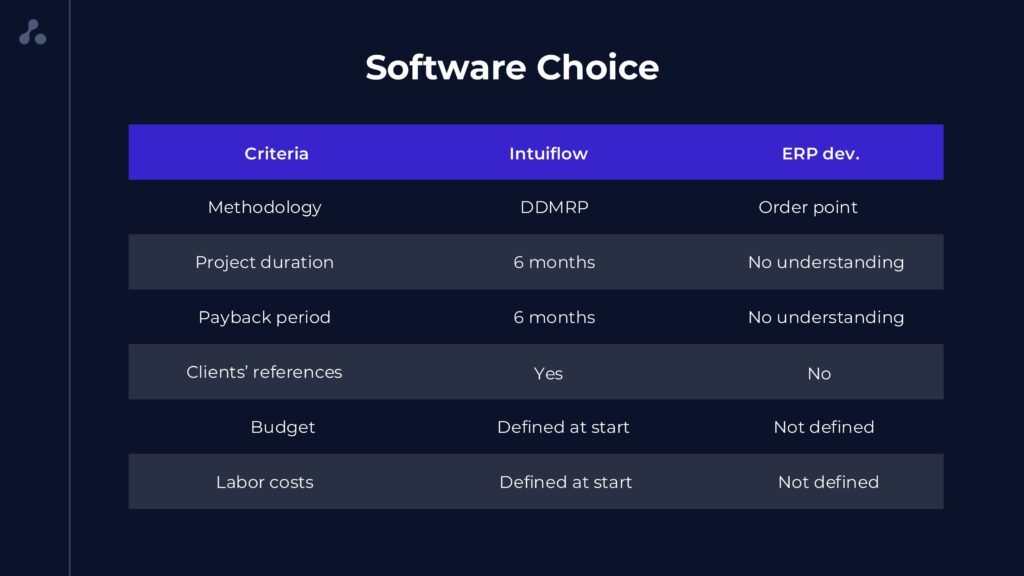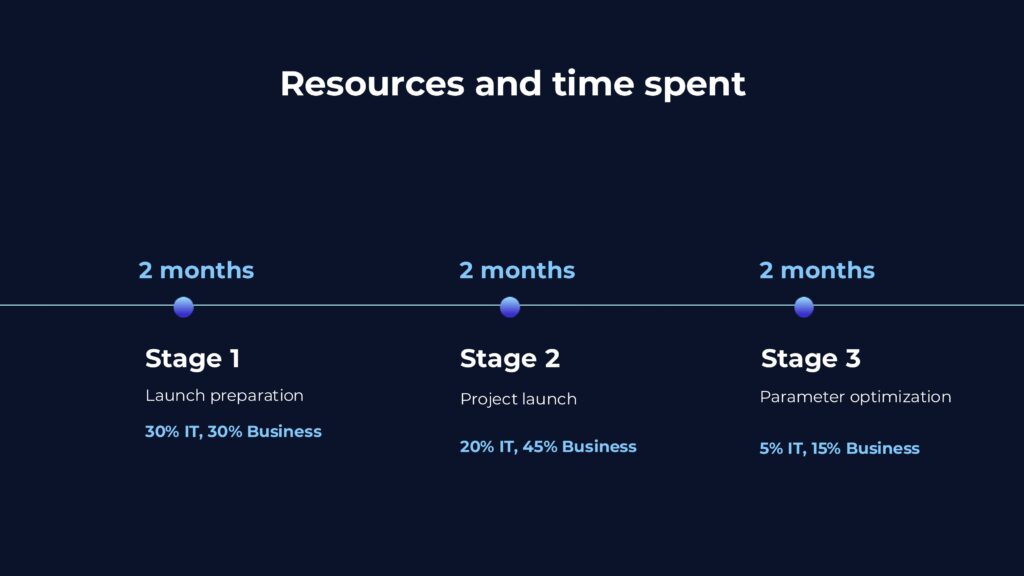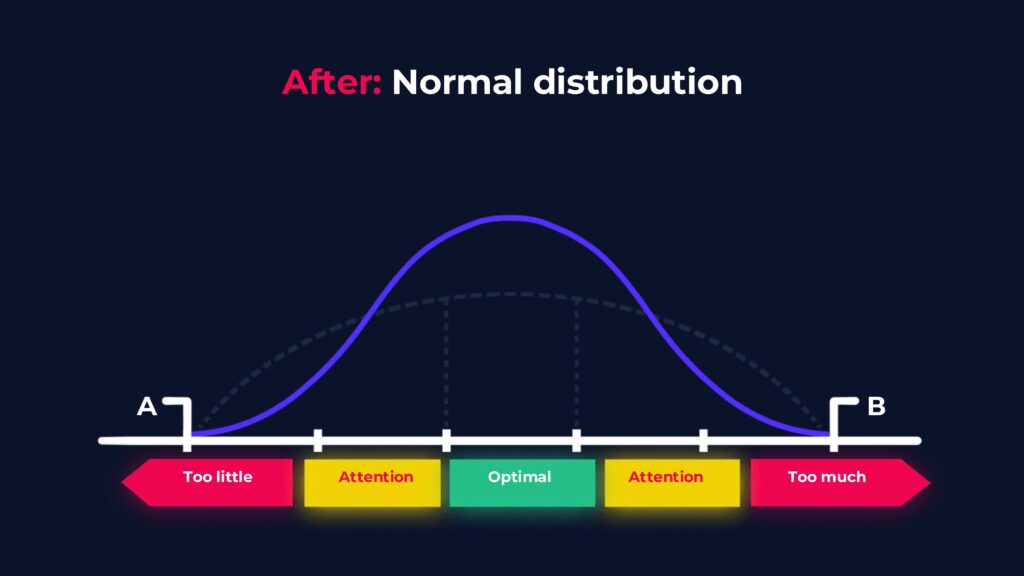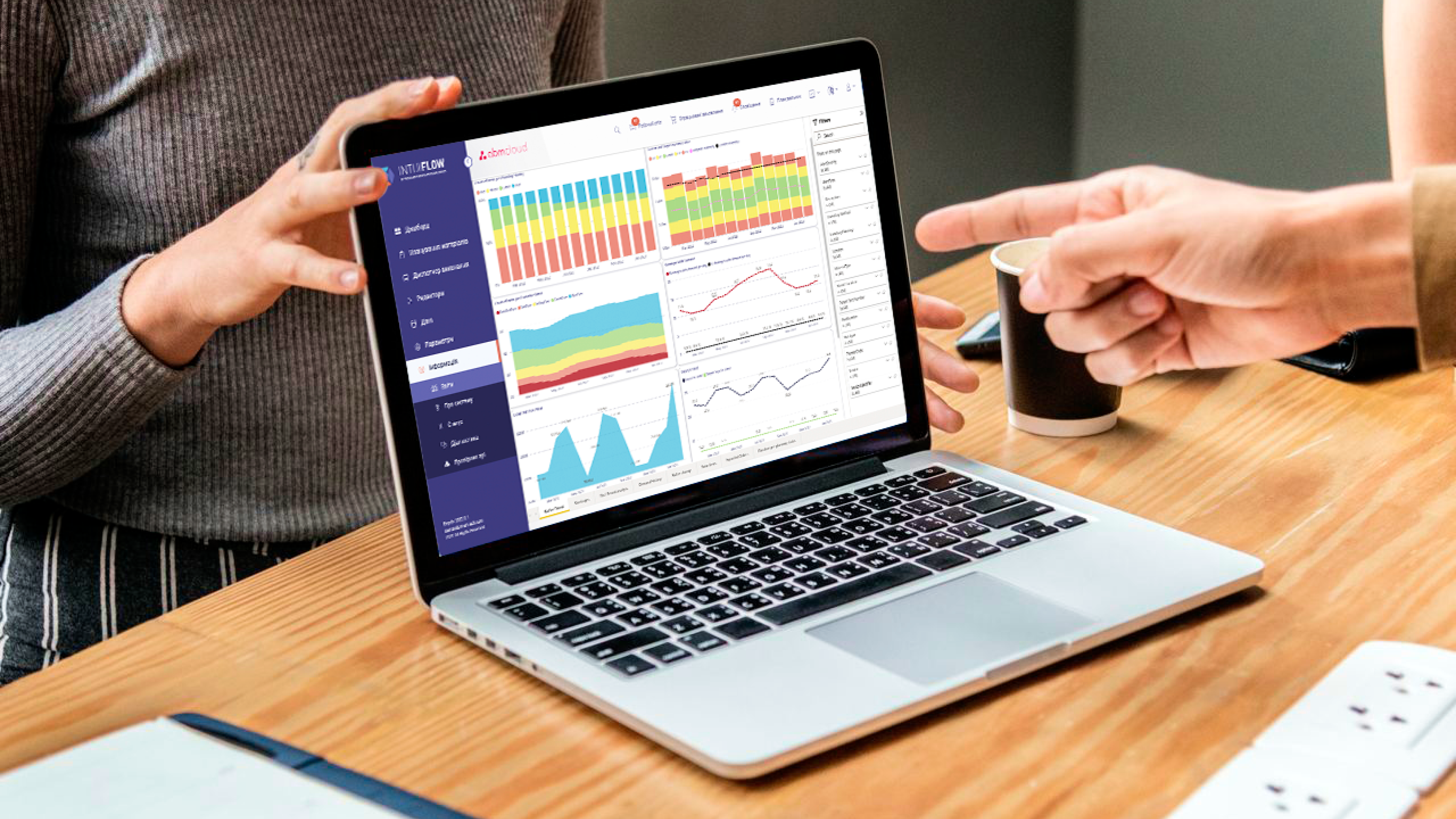Fast Pack case study. Inventory management software in the era of market turbulence

The realities of modern business leave no chance for those who are slow to respond to change. A long discussion of the way out of a difficult situation leads to the fact that a carefully prepared plan becomes irrelevant, as the situation is already different. The opportunity not to develop your own inventory management software from scratch, but to purchase and apply a ready-made, proven tool and benefit from the experience of market leaders is of particular value. Let’s take a look at the Fast Pack case study on the implementation of the INTUIFLOW – solution for inventory management based on the Demand Driven MRP methodology.
Fast Pack is Ukraine’s largest supplier of fasteners in the DIY sector. The company cooperates with the leaders of Ukrainian DIY retail – Epicenter, Nova Liniya, Leroy Merlin, and has experience in exclusive supplies of hardware products for stores of the German brands Praktiker and OBI.
The company’s assortment includes 10,000 SKUs in 12 product categories. The goods come from 10 countries located in different parts of the world, respectively, and each SKU has its own lead time.
With such a large scale and intensity of logistics processes, the search for a systematic solution for managing the flow of goods became especially important for the company.
Fast Pack is a fast-growing business with a high level of automation and a motivated team. The company sought to optimize its inventory management and set the following goals:
- Minimize potential errors in procurement and supply planning. Supply planning was done using Excel, which was too time-consuming and not accurate enough.
- Ensuring the constant availability of the necessary assortment to meet incoming demand.
- Improving the service level. The company wanted to remain the preferred supplier for national retail chains.
- Standardization and automation of all supply planning and inventory management processes.
- Parameterization of basic logistics conditions for each SKU. It was necessary to calculate the volume of the minimum batch, the multiplicity of orders to a supplier or manufacturer, the timing of production and delivery of products, and the frequency of orders.
- Reducing the inventory level, shortening the lead time of orders, and ensuring uninterrupted supply.
- Improving the processing of data on the availability and movement of goods. Management and analysts needed to see the current situation with inventory in real time.
- Building rational supply chains, which is an important competitive advantage for companies of this profile.
- Responding to the challenges of the pandemic – restrictions, disruptions in production and logistics, and demand volatility.
There are several ways to automate inventories. You can independently develop new inventory software from scratch or by modifying an existing program.Or you can purchase a ready-made software product with consulting and support.
As an alternative to the SaaS INTUIFLOW software, they considered modifying the accounting system used by the company. The weaknesses of this solution were analyzed:
- The need to independently create the methodology and algorithms on which the program would be based.
- Inability to reliably estimate the main parameters of the project – labor costs, total budget, development time, and cost recovery.
- Lack of guarantees of the quality of the new software and its usability.
- Significant involvement of company specialists in the development and implementation of an IT product – to the detriment of participation in core business processes.

The proposal to implement a purchase order and inventory management software looked convincing due to the examples of successful use of SaaS INTUIFLOW and the DDMRP at similar enterprises.
Decision to implement stock control software
The decision to implement the software was based on the advantages:
- Implementation period (6 months) and cost recovery (also 6 months)
- Access to the cloud solution is provided by the SaaS model
- The effectiveness of the methodology on the basis of which the software product was created. DDMRP combines the world’s best practices – Theory of Constraints, Lean, Six Sigma, MRP, DRP – with innovative developments.
- The ability to manage the entire supply chain through a single system, from purchasing goods to managing inventory in the distribution network.
- The SaaS solution capabilities allow you to optimize inventory levels, respond to demand growth, calculate and maintain the required quantities of goods at key points in the supply chain.
- A well-developed implementation process that takes into account the specifics of the client’s business processes.
- Training of Fast Pack staff by ABM Cloud experts, and after the system implementation
- Technical and consulting support after the program implementation – on an ongoing basis.
Inventory Software Implementation: Step By Step
The Fast Pack inventory management optimization project involved the implementation of the INTUIFLOW software to manage all active buffered and back ordered inventory, which includes more than 10,000 SKUs with lead times ranging from 3 to 200 days.
The project was implemented in 3 stages, each of which involved training for project team members.
First stage of implementing stock management software
At the initial stage, managers and specialists from the sales, purchasing, and warehouse logistics departments underwent a two-day training on the DDMRP approach and tested their knowledge.
The first stage of the project involved preparing data for use in the software and creating the INTUIFLOW information base.
The company’s workflows were studied. We analyzed the information collected about what data is already available in the client’s accounting system (1C) and what needs to be updated or added.
To eliminate the identified problem of the lack of formalization of the closing of purchase orders and work in progress accounting, the ABM Cloud and Fast Pack teams developed a joint solution. Fast Pack IT specialists set up file exchange between ERP and INTUIFLOW.
It should be noted that the project participants paid sufficient attention to the integration of the new cloud solution with ERP based on the 1C accounting system used by the customer. Currently, daily data exchange between INTUIFLOW and 1C ERP has been established.
The project team has standardized the parameters of each SKU: lead time, order cycle, minimum batch, multiplicity.
Then, the SKUs were grouped by the regions from which they are delivered and the corresponding lead times:
- Ukraine (shortest lead time);
- Europe (medium lead time);
- Asia (the longest lead time).
The Fast Pack project participants were able to apply a simple way to calculate orders and a clear priority for scheduling their fulfillment in INTUIFLOW.
Second stage of implementing
The second stage involved the launch of the inventory software. This stage included two user trainings for each section of the program, followed by testing.
After that, we corrected data errors, modeled the process of accepting and processing orders, and calculated buffers. The consultants supported the managers’ work with the first orders received in the new system.
The goals of the second stage included building employees’ trust in the system and developing a habit of starting their working day in INTUIFLOW.
The second stage saw the first positive results from the program’s implementation. This stage of the project took place in early 2021, a difficult period. The closure of most retail outlets collapsed demand. The decrease in the number of orders affected employees who worked in warehouses and packaging, as their salaries depend on the workload.
To respond to such situations, the INTUIFLOW program includes the CDAF – buffer adjustment factor. Using this function of the program allows you to evenly increase the number of days of stock in the red buffer zone for all items. Thus, the order to the manufacturer for the production and delivery of SKUs is received earlier than with the usual system settings. In fact, at a certain point, the production of those stocks is launched, due to which, after the restrictions are lifted, the demand will be met. At the same time, thanks to the methodology for determining the optimal cycle, the system automatically recalculates the volume of batches of goods and order cycles, thus regulating the number of re-adjustments, staff and equipment utilization of Fast Pack contract manufacturers.
Thus, INTUIFLOW’s functionality allowed the company to flexibly respond to demand volatility, retain warehouse and packaging staff, and prepare for increased customer activity after the quarantine restrictions were lifted.
Third stage of implementing
The task of the final stage of implementation was to prepare the company’s employees to use the DDMRP and INTUIFLOW independently in their daily work. We organized staff training in analytics and cloud solution settings using the Demand Driven Planner Professional course. In addition to the operational level, the project participants focused on the supply chain model, which includes tactical and strategic management levels.
The third stage involved setting up the program parameters and calculating the optimal production and supply cycles. Recommendations were made to improve inventory turnover. The automated system’s management scope covered the entire Fast Pack range. We started working with alerts, reporting and analytics.
The third stage was devoted to the full use of the software functionality. Above, we have already discussed the use of system response coefficients for unpredictable demand fluctuations. Similar functions are provided to take into account predicted events.
In the course of the project, Fast Pack representatives were convinced of the effectiveness of using buffer adjustments, as well as seasonality and unit conversion factors for inventory management.
Seasonality
Part of the assortment is characterized by seasonality. Accordingly, orders for such items need to be placed in advance. In INTUIFLOW, seasonality factors (PAF) are used to dynamically adjust the buffer level to the expected demand.
When you receive information about upcoming planned events, such as a supplier’s announcement of a price increase or a maintenance shutdown, you can create an additional inventory of that manufacturer’s products. The CDAF adjustment factor allows you to automatically increase the red or yellow buffer zones by adding a certain number of additional sales days or storage units to them.
It is worth noting the ease of use of the cloud-based system aimed at solving the daily problems of trade and logistics professionals.
For example, often the operational accounting of goods is carried out in pieces, packages, sets, etc. But the order to the supplier is made in units of transportation of goods, usually in units of mass. The conversion factor present in the program’s functionality helps to save employees’ working time.
At all stages of the project, the ABM Cloud team provided methodological and technical support to Fast Pack employees who started using the INTUIFLOW SaaS solution. Support from ABM Cloud’s Customer Success department is provided on an ongoing basis. Weekly meetings of users and consultants are held, opinions are exchanged, and the application of the program is analyzed.
Key results of implementing inventory management system
The project to implement the INTUIFLOW was completed in six months. Each stage lasted two months.

The results were achieved:
- The process of ordering goods from manufacturers has been fully automated.
- During the period of using INTUIFLOW, the share of SKUs with overstock and shortages has decreased by 2 times.
- The service level has increased to 98%. Nevertheless, we managed to increase the service level while reducing inventory.
- The overall inventory level decreased by 20%, which means that the company reduced its storage costs and improved its working capital structure.
Video case study:
The company managed to achieve key results despite the fact that during the pandemic, the level of supplier service decreased, while lead-time increased by 30%, and demand volatility increased.
The company has managed to overcome the bimodal distribution, in which a significant number of SKUs are in short supply, many items are overstocked, and only a small number of SKUs are at the optimal level.

- Timely response of the system to fluctuations in actual demand is ensured by using the functionality of the INTUIFLOW cloud solution
- The probability of errors has been reduced. Most decisions and calculations are made automatically.
- Staff time has been used more rationally.
The demand-driven inventory management approach optimizes the entire supply chain, from the manufacturers whose products Fast Pack sells to the retail shelf.
It should be noted that ABM Cloud experts are closely studying the specifics of applying the DDMRP and the SaaS solution based on it in various business models. The inventory software is being improved, functionality is being added, customers are receiving new versions of the product, and with them – new opportunities to improve the efficiency of inventory management.



